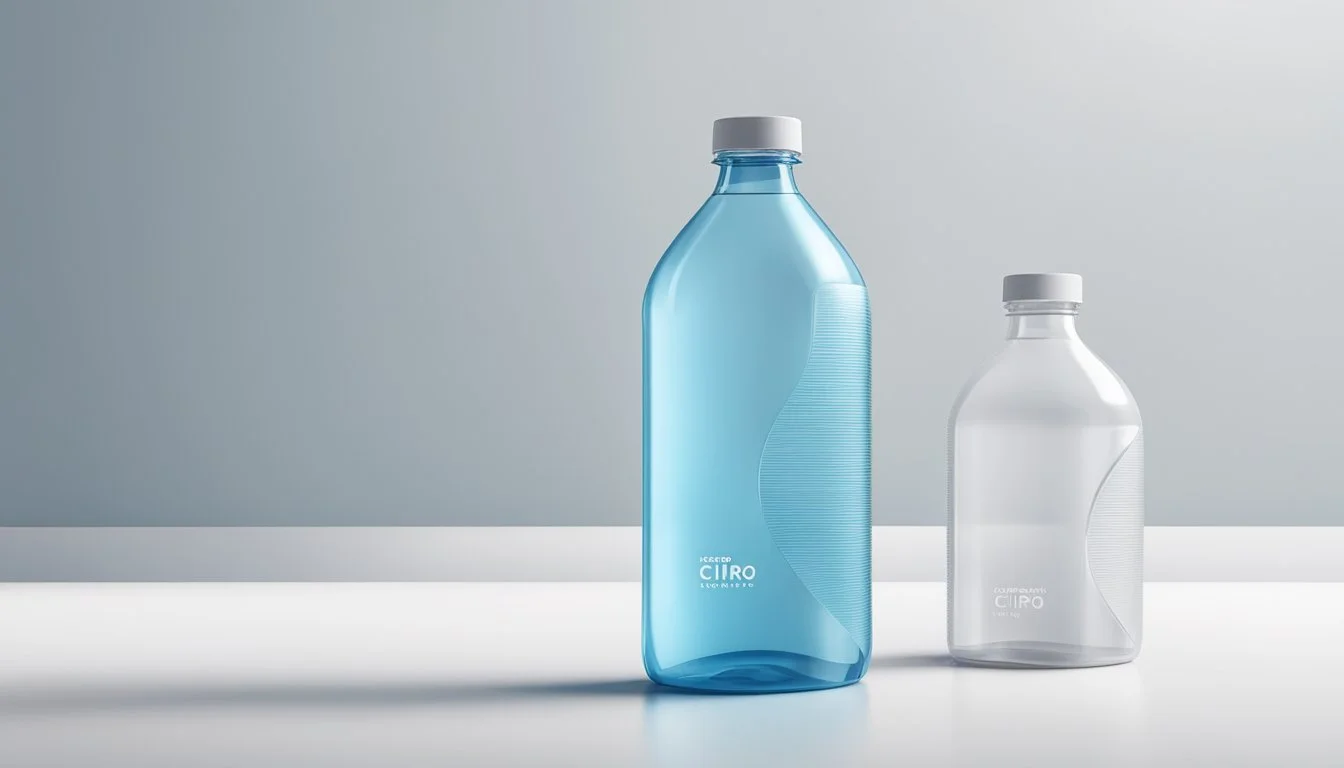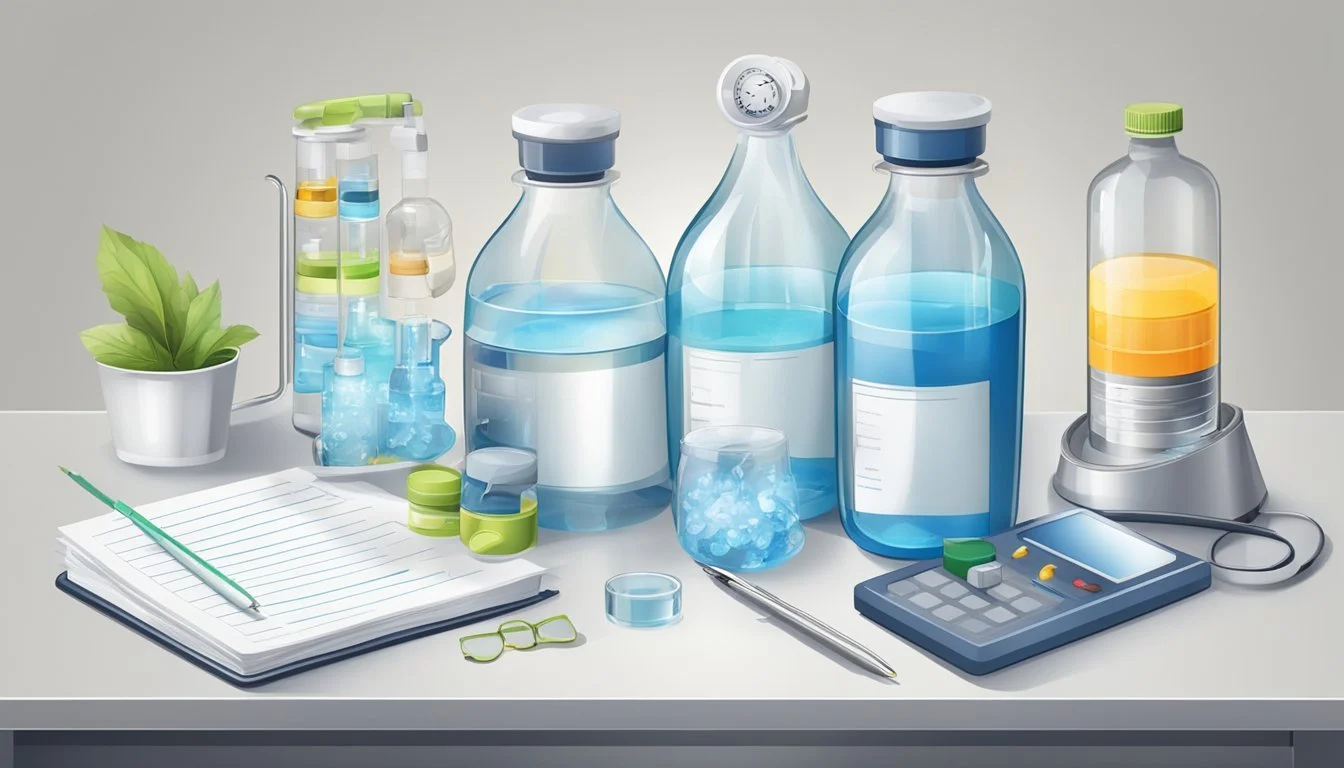Flow vs. Cirro
Which Bottled Water is Better? A Comparative Analysis
Choosing the best bottled water can elevate your hydration experience. When it comes to Flow and Cirro, each has unique offerings that stand out. Flow boasts a refreshing taste with its naturally alkaline, mineral-rich composition, making it a favorite for those seeking health benefits along with hydration.
Cirro, on the other hand, provides a pure, crisp taste that many find reliable and enjoyable. Its minimalist design appeals to consumers looking for no-nonsense hydration. Comparing these two, Flow's natural minerals make it particularly appealing to health-conscious individuals, while Cirro's straightforward purity is perfect for those preferring simplicity.
For those prioritizing both taste and health benefits, Flow emerges as the superior choice. This direct comparison aims to give readers a clear understanding of which brand might better suit their needs, encouraging further exploration into what makes each bottled water unique.
Understanding Bottled Water
Bottled water comes in various forms and adheres to strict regulations to ensure safety and quality. It is important to understand the differences between various types and how they are regulated.
Types of Bottled Water
Bottled water can be classified into several categories. Natural spring water is sourced from groundwater that naturally rises to the surface. Mineral water contains specific amounts of minerals and trace elements, usually collected from springs. Purified water undergoes processes like distillation, deionization, or reverse osmosis to remove contaminants. Carbonated water has added carbon dioxide for fizz. Alkaline water has a higher pH, claimed to neutralize acidity. Consumers should consider taste, mineral content, and source of water when choosing.
Regulations and Standards
Bottled water must comply with stringent regulations to ensure safety. The FDA oversees bottled water, mandating thorough quality control protocols. The EPA regulates tap water under the Safe Drinking Water Act. Bottled water brands must meet standards for contaminants and toxins, including heavy metals. Environmental Working Group (EWG) provides reports on water quality, highlighting potential risks. Ensuring bottled water is sourced and treated correctly is vital for consumer safety.
Bottled Water vs. Tap Water
Tap water is managed by municipal water systems and treated to remove contaminants. Filters can enhance tap water by removing impurities. Bottled water, often seen as cleaner or more convenient, undergoes rigorous purification. Reusable bottles offer an environmentally friendly option for both. Tap water typically costs less and has less environmental impact. Both options can deliver safe, clean drinking water, but each has its merits depending on quality control and user preference.
Brands at a Glance
Flow and Cirro offer unique origins and product ranges that set them apart in the bottled water market.
Brand Origin and Presence
Flow is sourced from natural springs in Canada, emphasizing sustainable methods and eco-friendly packaging. Flow's presence spans North America and parts of Europe, catering to eco-conscious consumers. Their water is known for high mineral content and a smooth taste.
Cirro, on the other hand, taps into deep aquifers in Italy. Its pristine source and rigorous purification process highlight its commitment to purity. Cirro's distribution is predominantly in Europe, with a growing market in the United States.
Both brands prioritize environmental sustainability, but their geographic roots and reach differ, impacting their market strategies and consumer bases.
Product Range
Flow offers a variety of options, including still and sparkling water in flavors like cucumber-mint and watermelon-lime. Their packaging, often made with 100% renewable resources, appeals to eco-friendly consumers. Flow's product range emphasizes health, featuring alkaline water with a natural pH balance.
Cirro provides a more limited range, focusing on pure still water. Their premium water is sold in elegant glass bottles, underscoring a luxurious brand image. While they lack flavored options, Cirro excels in delivering high-quality, naturally filtered water with low mineral content.
Both brands offer distinct product lines that cater to different consumer preferences, from flavor and packaging to purity and pH balance.
Quality Assessment
Flow and Cirro bottled waters offer distinct experiences based on their taste profile and water quality. Evaluating these aspects helps determine which brand might be better suited to your preferences.
Taste Profile
Flow is known for its naturally alkaline spring water, which provides a smooth and mellow taste. Enthusiasts often appreciate its light mineral content, contributing to a clean and refreshing sensation. The packaging—eco-friendly tetra packs—also ensures the water remains pure, free from any plastic aftertaste.
Cirro, sourced from pristine underground springs, emphasizes a crisp and vibrant flavor. Its filtration process removes impurities while maintaining a balanced mineral profile. The result is a bright and slightly sweet flavor, favored by those who enjoy a more pronounced mineral taste.
In summary, Flow offers a mellow and smooth taste, while Cirro provides a crisp and refreshing profile. Each has its own unique qualities, appealing to different palates.
Health and Safety Considerations
When choosing between Flow and Cirro bottled water, it's critical to evaluate potential health risks and ensure safe consumption practices.
Potential Risks
Various contaminants pose potential risks in bottled water, including lead and heavy metals. Lead contamination can result from aging pipes and can severely impact organs like kidneys and the nervous system.
Additionally, check for toxins such as arsenic, which can accumulate in the body and cause long-term health problems. Heavy metals like mercury and cadmium are also a concern due to their adverse effects on liver and kidney function. Consumers should ensure that any bottled water they purchase meets safe drinking water standards to avoid these risks.
Safe Consumption Practices
To minimize health risks, it's essential to follow safe consumption practices. First, always check the label for any information about toxins and contaminants. Look for certifications from health authorities that approve the water as safe drinking water.
Using a reusable, clean water bottle can reduce exposure to any potential contaminants. Additionally, storing bottled water in cool, dark places can prevent the growth of harmful bacteria and preserve water quality. Pay attention to expiration dates; while water itself doesn't expire, the plastic bottle can deteriorate and leach chemicals over time.
Environmental Impact
Evaluating the environmental impact of Flow and Cirro requires understanding their bottle materials and pollution contributions, as well as their sustainability efforts. Differences in materials, such as plastic and glass, and initiatives like carbon offset programs play significant roles.
Bottle Materials and Pollution
Flow and Cirro primarily use plastic bottles, but their impacts differ. Flow's bottles contribute to plastic pollution and microplastics in the environment. They rely on PET plastic, which adds to the already significant burden of plastic waste globally.
Cirro has started shifting to glass bottles and boxed water options, reducing its plastic footprint. Glass bottles, while heavier and more energy-intensive to transport, avoid the issue of microplastics breaking down in natural ecosystems. Both brands must address the carbon footprint of producing and transporting their drinkable products.
Sustainability Efforts
Flow has implemented various sustainable practices. They use renewable energy for manufacturing and invest in carbon offset programs to mitigate their impact. Their bottles are recyclable, adding to their sustainability profile.
Cirro focuses on reducing its environmental footprint by adopting boxed water alternatives. These cartons are made from renewable materials and have a lower overall environmental impact compared to traditional plastic bottles. Additionally, Cirro collaborates with organizations like the Environmental Working Group to ensure its practices align with sustainability goals.
Both brands are making strides, but continued efforts are necessary to truly minimize their environmental impact.
Pricing and Accessibility
When considering bottled water brands, it is crucial to evaluate both their cost and availability. This helps determine the best value and convenience for consumers.
Comparison of Bottled Water Costs
Flow and Cirro have distinct pricing strategies. Flow, known for its eco-friendly packaging, generally costs more. A 500ml bottle of Flow may cost between $1.50 and $2.00. Cirro, emphasizing cost-effectiveness, offers a 500ml bottle for around $1.00 to $1.50.
A 24-pack of 500ml bottles reveals more significant differences. Flow's pack is priced at approximately $36 to $48. Cirro's equivalent pack ranges from $24 to $30. This makes Cirro a more inexpensive option for budget-conscious consumers.
Availability
Flow is available in major retail chains such as Whole Foods and online platforms like Amazon. However, due to its targeted distribution, it may not be present in every convenience store. It’s also available in eco-friendly boutiques.
Cirro holds a strong presence in supermarkets, convenience stores, and online marketplaces. Its widespread availability makes it a convenient choice for many consumers. Cirro’s accessibility in both urban and rural areas also boosts its appeal.
Both brands are sold online, ensuring that consumers in various locations can access them. This online presence enhances the convenience factor for those preferring home delivery.
Consumer Considerations
When evaluating Flow and Cirro bottled waters, consumers often focus on factors such as taste preferences and economic considerations. Both brands offer different advantages, but the choice will depend on individual priorities like flavor, health benefits, and cost.
Taste Preferences
Taste is a critical factor when choosing between bottled water brands. Flow, praised for its smooth, naturally alkaline water, often appeals to those who prefer a clean, crisp taste without any aftertaste. The addition of essential minerals helps enhance the water's flavor.
Cirro, on the other hand, is known for its slightly mineral-infused taste, which some find refreshing while others might describe it as somewhat brackish. This variation is partly due to the source and the mineral content present in the water. Consumer Reports have highlighted differences in taste profiles, showing that some prefer the subtle tang that Cirro offers over Flow.
Economic Factors
Economic considerations also play a significant role. Flow is often positioned as a premium brand, and its price reflects the added benefits of alkaline properties and eco-friendly packaging. This brand appeals to consumers willing to pay extra for perceived health benefits and sustainability.
Cirro tends to be more affordable, making it a popular choice for budget-conscious buyers. While it may not have the same health-oriented marketing as Flow, its lower price point attracts those who prioritize cost savings over premium features. In the ever-growing bottled water industry, both brands carve out niches based on these economic factors.
Final Verdict
Both Flow and Cirro bottled waters offer unique characteristics catering to different preferences. The overall decision hinges on factors such as taste, source, and health benefits.
Summary of Findings
Flow is recognized for its natural alkaline properties and smooth, slightly sweet taste. It's sourced from Canadian springs, offering a clean drinking experience. The packaging is eco-friendly, which appeals to environmentally conscious consumers.
Cirro stands out for its crisp and refreshing taste. This water is noted for its purity, coming from deep aquifers. Consumers appreciate its balanced mineral content, which enhances flavor without overpowering it.
In taste comparisons, Cirro often edges slightly ahead for its refreshing qualities. However, Flow’s environmental credentials and health benefits make it a strong contender.
Expert Recommendations
Nutritionists favor Flow for its natural alkalinity, which can help balance the body's pH levels. It's often recommended for those looking to maintain a healthy lifestyle. Additionally, the sustainable packaging is a significant plus.
Water sommeliers and taste experts frequently commend Cirro for its pure and refreshing taste profile. Its balanced minerals make it an excellent choice for general hydration and culinary uses.
Flow excels in aspects like environmental impact and health benefits. Cirro wins for taste and purity. Choosing between them depends on individual preferences and priorities such as taste versus health benefits and environmental impact.
More About Flow
Flow vs Whole Foods Italian Still Mineral water: Which Bottled Water is Better?
Mountain Valley Spring Water vs Flow: Which Bottled Water is Better?








